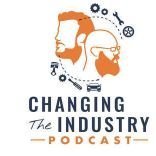Back When - - - Which era do you fit into?
-
Available Subscriptions
-
Have you checked out Joe's Latest Blog?
-
By Joe Marconi in Joe's Blog0 commentsIt always amazes me when I hear about a technician who quits one repair shop to go work at another shop for less money. I know you have heard of this too, and you’ve probably asked yourself, “Can this be true? And Why?” The answer rests within the culture of the company. More specifically, the boss, manager, or a toxic work environment literally pushed the technician out the door.
While money and benefits tend to attract people to a company, it won’t keep them there. When a technician begins to look over the fence for greener grass, that is usually a sign that something is wrong within the workplace. It also means that his or her heart is probably already gone. If the issue is not resolved, no amount of money will keep that technician for the long term. The heart is always the first to leave. The last thing that leaves is the technician’s toolbox.
Shop owners: Focus more on employee retention than acquisition. This is not to say that you should not be constantly recruiting. You should. What it does means is that once you hire someone, your job isn’t over, that’s when it begins. Get to know your technicians. Build strong relationships. Have frequent one-on-ones. Engage in meaningful conversation. Find what truly motivates your technicians. You may be surprised that while money is a motivator, it’s usually not the prime motivator.
One last thing; the cost of technician turnover can be financially devastating. It also affects shop morale. Do all you can to create a workplace where technicians feel they are respected, recognized, and know that their work contributes to the overall success of the company. This will lead to improved morale and team spirit. Remember, when you see a technician’s toolbox rolling out of the bay on its way to another shop, the heart was most likely gone long before that.
-
-
Similar Topics
-
By carmcapriotto
Ready to kick off the year with a marketing plan that keeps your bays full? Join Brian Walker and Caroline Legrand as they dive into easy, actionable strategies to help auto repair shops plan their marketing month-by-month. From practical ways to align your campaigns with community events to leveraging fun, nationally recognized days, you’ll learn how to make your marketing engaging and impactful.
Discover fresh ideas for social media, event hosting, and campaigns that’ll keep your shop top-of-mind all year. Whether it’s winter car care, “new year, new car” resolutions, or creative customer appreciation ideas, this episode is packed with ways to turn small efforts into big wins.
Don’t let January sneak up on you—start planning now!
Tune in to get the tools you need to make 2024 your best marketing year yet.
Thank you to RepairPal for sponsoring The Auto Repair Marketing Podcast. Learn more about RepairPal at https://repairpal.com/shops
Are you ready to convert clients to members? App fueled specializes in creating custom apps tailored specifically for auto repair businesses. Build client loyalty. Get started today with your own customer loyalty app. Visit Appfueled.com
Lagniappe (Books, Links, Other Podcasts, etc)
How To Get In Touch With the Guest
Show Notes with Timestamps
How To Get In Touch
Group - Auto Repair Marketing Mastermind
Website - shopmarketingpros.com
Facebook - facebook.com/shopmarketingpros
Get the Book - shopmarketingpros.com/book
Instagram - @shopmarketingpros
Questions/Ideas - [email protected]
Click to go to the Podcast on Remarkable Results Radio
-
By Changing The Industry
Achieve Your Shop Goals With The Power of Intentional Planning #podcast #autorepairbusiness
-
By carmcapriotto
The Weekly Blitz is brought to you by our friends over at Shop Marketing Pros. If you want to take your shop to the next level, you need great marketing. Shop Marketing Pros does top-tier marketing for top-tier shops.
Click here to learn more about Top Tier Marketing by Shop Marketing Pros and schedule a demo:https://shopmarketingpros.com/chris/
Check out their podcast here: https://autorepairmarketing.captivate.fm/
If you would like to join their private Facebook group go here: https://www.facebook.com/groups/autorepairmarketingmastermind
In this episode of The Weekly Blitz, Coach Chris Cotton from Auto Fix Auto Shop Coaching delves into the increasingly prevalent issue of "ghosting" within the auto repair industry's hiring process. Ghosting, a term that describes the sudden cessation of communication by either job applicants or businesses without any prior explanation, has become a significant challenge for both parties involved.
Coach Chris begins by examining the underlying reasons for this trend. On the applicant's side, factors such as receiving multiple job offers, feeling overwhelmed by the job search process, or simply deciding that a particular position is not the right fit can lead to ghosting. From the business perspective, a lack of structured follow-up processes, being inundated with applications, or changes in hiring needs can result in businesses inadvertently ghosting candidates.
The impact of ghosting is profound, affecting both job seekers and business owners. For job seekers, being ghosted by potential employers can lead to feelings of frustration, confusion, and a lack of closure, which can be demoralizing and impact their confidence in the job market. For business owners, ghosting by candidates can disrupt hiring timelines, lead to wasted resources, and create gaps in staffing that affect operations.
To address these challenges, Coach Chris offers several strategies aimed at mitigating the occurrence of ghosting. He emphasizes the importance of clear communication throughout the hiring process. This includes setting expectations from the outset, providing timely updates to candidates, and being transparent about the hiring timeline and decision-making process.
Furthermore, Coach Chris highlights the role of empathy in improving hiring practices. By understanding the pressures and challenges faced by job seekers, businesses can tailor their communication and engagement strategies to be more supportive and considerate. This approach not only reduces the likelihood of ghosting but also enhances the overall candidate experience.
The episode concludes with practical tips for auto repair shop owners to refine their recruitment processes. These include implementing structured follow-up procedures, utilizing technology to manage applications efficiently, and fostering a company culture that values open and honest communication. By adopting these strategies, auto repair shops can improve their hiring outcomes, reduce the frustration caused by ghosting, and build stronger, more reliable teams.
The Rise of Ghosting (00:01:05)
Discussion on the troubling trend of ghosting in the hiring process and its impacts.
Why Ghosting is Increasing (00:02:16)
Exploration of the reasons behind the rise of ghosting, including job market dynamics.
Employee Perspective on Ghosting (00:03:16)
Insights into why job seekers ghost employers, including feeling undervalued and overwhelmed.
Business Owner Perspective on Ghosting (00:05:41)
Challenges business owners face when candidates ghost them, including time and financial losses.
The Importance of Communication (00:08:03)
Emphasis on the need for better communication and transparency in the hiring process.
Impact on Business Reputation (00:09:00)
How consistent ghosting can negatively affect a business's reputation and public image.
Strategies to Reduce Ghosting (00:09:30)
Suggestions for both parties to improve communication and reduce ghosting occurrences.
Creating a Welcoming Interview Process (00:10:05)
Advice on how to create a respectful and engaging interview environment for candidates.
Follow Through After Interviews (00:11:05)
Importance of following through with candidates to maintain professionalism and opportunities.
Conclusion and Acknowledgments (00:12:03)
Wrap-up of the episode, encouragement for listeners, and thanks to the sponsor.
Connect with Chris:
[email protected]
Phone: 940.400.1008
www.autoshopcoaching.com
Facebook: https://www.facebook.com/
AutoFixAutoShopCoachingYoutube: https://bit.ly/3ClX0ae
#autofixautoshopcoaching #autofixbeautofixing #autoshopprofits #autoshopprofit #autoshopprofitsfirst #autoshopleadership #autoshopmanagement #autorepairshopcoaching #autorepairshopconsulting #autorepairshoptraining #autorepairshop #autorepair #serviceadvisor #serviceadvisorefficiency #autorepairshopmarketing #theweeklyblitz #autofix #shopmarketingpros #autofixautoshopcoachingbook
Click to go to the Podcast on Remarkable Results Radio
-
By JustTheBest
Premium Member Content
This content is hidden to guests, one of the benefits of a paid membership. Please login or register to view this content.

-
By carmcapriotto
Welcome to another episode of the Auto Repair Marketing Podcast! I'm your host, Brian Walker, and I’m excited to have my co-host, Kim, back with me after her recovery. Today, we’re diving into a topic that can change the game for your shop: Stop Playing Small.
If you’re tired of feeling stuck or just getting by, this episode is for you. We'll be talking about the mindset shifts and practical steps needed to build a thriving, impactful business. It’s time to break free from the limits we place on ourselves and dream bigger.
From overcoming the unique challenges of the auto repair industry to redefining what true success means, we’ll share real stories, honest advice, and strategies you can use to push your business to new heights. Plus, you’ll hear how the right mentors, clarity breaks, and a supportive community can make all the difference.
Get ready to challenge yourself, take a fresh look at your goals, and start building a business that’s more than just getting by—it’s an empire.
Let’s jump in and stop playing small together!
Thank you to RepairPal for sponsoring The Auto Repair Marketing Podcast. Learn more about RepairPal at https://repairpal.com/shops
Are you ready to convert clients to members? App fueled specializes in creating custom apps tailored specifically for auto repair businesses. Build client loyalty. Get started today with your own customer loyalty app. Visit https://appfueled.com/
Lagniappe (Books, Links, Other Podcasts, etc)
https://en.wikipedia.org/wiki/Start_with_Why - Start with Why by Simon Sinek
https://youtu.be/u4ZoJKF_VuA?si=8yihKPEDRkFErdeN
https://shopmarketingpros.com/kim-and-brian-tell-their-story/ - Episode 2 : Kim and Brian Tell Their Story
https://shopmarketingpros.com/walkers-hierarchy-of-marketing-needs/ - Walkers Hierachy of Marketing Needs (Blog)
https://shopmarketingpros.com/ep-101-walkers-hierarchy-of-marketing-needs/ - Podcast Episode 101
https://shopmarketingpros.com/ep-084-failing-forward-in-marketing/ - Failing Forward in Marketing - Episode 84
Show Notes with Timestamps
How To Get In Touch
Group - Auto Repair Marketing Mastermind
Website - shopmarketingpros.com
Facebook - facebook.com/shopmarketingpros
Get the Book - shopmarketingpros.com/book
Instagram - @shopmarketingpros
Questions/Ideas - [email protected]
Click to go to the Podcast on Remarkable Results Radio
-
-
-
Our Sponsors


















Recommended Posts